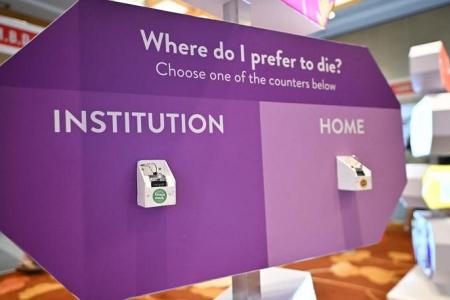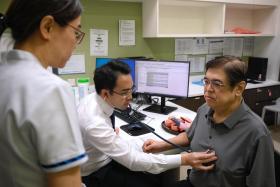Home palliative care capacity to rise 50% by end-2025
With a rapidly ageing population in Singapore, more people are being given the opportunity to die in the comfort of their homes.
To help them do so, home palliative care capacity will be increased to 3,600 by end-2025, up by 50 per cent from the current 2,400.
“By then, we would have almost doubled the home palliative care capacity from the point of announcing the new measures,” said Health Minister Ong Ye Kung at the official opening of Tan Tock Seng Hospital Integrated Care Hub on March 19.
When the National Strategy for Palliative Care was launched in July 2023, home palliative capacity was around 2,000 patients. This number is expected to increase to 2,800 by the end of this year.
Inpatient and day hospice capacities are also expected to rise by around 5 and 12 per cent respectively by 2025. This translates to a total capacity of about 300 inpatient beds and 140 day hospice places.
“I know capacity expansion is not a simple matter. It is not just about having more funding, but also adequate skilled manpower, equipment and effective management oversight,” Mr Ong said.
“Nevertheless, the needs are rising, the work is urgent, and I hope our providers, especially those delivering home palliative care, can move as fast as you can to fulfil the wishes of as many patients as possible.”
Currently, patients who wish to die at home face difficulties not only in getting their hands on medical equipment but also the high cost of setting up medical equipment at home.
To help smoothen the transition, the Ministry of Health (MOH) is rolling out its new Equipment Rental Scheme, where public hospitals will help make it easier to rent home equipment, instead of having the families deal with the rental companies themselves.
MOH has set aside $23 million for three years – from 2024 to 2027 – to implement this scheme, and more than 12,000 patients are expected to benefit.
Under the scheme, which will be launched in October, a patient discharged for home palliative care will receive maximum subsidies to allow them to pay about $100 to rent two pieces of equipment for a week.
These include a hospital bed and an oxygen concentrator, which would have cost over $2,000 if they were to buy.
Mr Ong said his ministry will be monitoring its use and study how best to continue providing such support in the long run.
As Singapore prepares to become a “super aged” society, MOH has also enhanced financing for inpatient palliative care, home palliative care, and day hospice care significantly.
Since February 2024, the lifetime MediSave withdrawal limit has been removed for all home palliative and day hospice patients who use their own MediSave.
The MediShield Life daily claim limits for inpatient palliative care have also been raised from $250 to $460 for general care, and from $350 to $500 for specialised care.
Under the 2023 National Strategy for Palliative Care, MOH also announced that the palliative care subsidy framework would be enhanced from the fourth quarter of 2024, where all Singapore citizens would receive subsidies of at least 50 per cent regardless of their monthly per capita household income.
Get The New Paper on your phone with the free TNP app. Download from the Apple App Store or Google Play Store now


